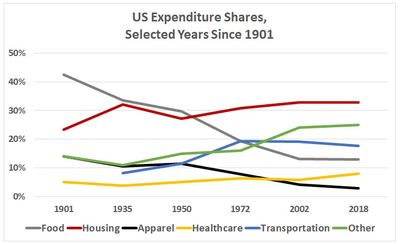The Accidental Sewing Machine Revolution: BBC News
The Accidental Sewing Machine Revolution: BBC News
Read the article from BBC News about the invention of the sewing machine.
Tim Harford writes the Financial Times’s Undercover Economist column. His 50 Things That Made the Modern Economy is broadcast on the BBC World Service.

Singer Sewing Machine 1930 guide (Source: Yale Digital Library and WinterthurTrade Catalog Collection)

Changing needs: Over the past century, US consumers spent an increasing share of income on housing, health care, transportation and a decreasing share for food, apparel and other expenses that include entertainment, education and retirement saving (Source: US Bureau of Labor Statistics, 1901 to 2002, and 2018)
Also, Read more about sewing history and the history of clothing: “Sewing by hand is a skill that is over 20,000 years old. Needles were once made out of animal horns and bones and the thread was made out of animal sinew….19,300 years into sewing the first iron needle was invented during the 14th century and then in the 15th century the first eye needle was invented.”